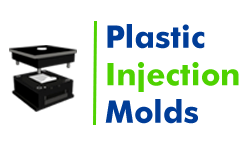- Mould Manufacturer
- Tooling
- Moulding Die
- Plastic Molding
- Plastic Injection Molding
- Injection Molding
- Nylon Injection Molding
- Injection Moulding
- Custom Injection Molding
- Injection Mould
- Injection Mouldings Process Manufacturers
- Medical Injection Molding
- Polycarbonate Injection Moulding
- Rapid Injection Moulding
- Injection Molds
- Injection Molding Cost
- Injection Molding Suppliers
- Injection Moldings
- HDPE Molding
- Metal Injection Molding
- Rubber Injection Molding
- Mold Designing
- Prototyping
- Automotive Injection Molding
- Blow Molding
- 3D Printing
Mold Design: More Than Meets The Eye
One of the biggest advantages of mold design is the availability and opportunity of tailoring numerous designs. However, you need to search for a leading service provider using high quality materials to make the injection molding process worthy enough for investment. The experts comply with the rules and regulations and use suitable components during the injection molding process. No matter what the size of the order may be, we are ready to prove that the injection molded parts are excellent and meets the specifications of industries.
Molding designs: benefits to obtain
The injection molding designs offer several different advantages for different industries and read the points below to know more.
- The injection mold design is beneficial for anything from medical devices to mechanical components.
- Based on your requirement, you can get any kind of mold to suit your manufacturing process and make it faster and efficient.
- With the injection molded designs, the likelihood of errors reduce drastically and allows you to enhance the errors.
- The injection molds eliminates the doubts from the production process and create larger number of products within less time.
We are here to offer you the assistance needed for creating different mold designs and cater to the requirements of customers with ease. Besides the abovementioned benefits, the method of designing injection molded parts offers a few more befits to industries.
- The designing of mold leads to exceptional accuracy as there are endless possibilities of design even for the most complex products.
- The mold designing process reduces the chances of errors during the process of manufacturing and the ease of design allows it to accomplish at the end of the product without many challenges.
- The custom mold and design considers the materials to be used for the end product. Therefore, the mold is designed to enhance the features of the material to be used during manufacturing process and improve the end result significantly.
- With custom mold design, you can reduce the cost due to the fast pace of manufacturing that attracts high revenue streams due to the production of more parts within a given time.
When you require working with an expert for custom molds, why not leverage our expertise and experience of several years to allow you meet the requirements of your business with ease. We follow the highest industry standards and pay heed to the details of manufacturing custom molded parts to ensure that your specifications are appropriately made.
Thermoforming mold design: what to know
The thermoforming mold design offers distinctive advantages in the economic front and allows businesses to rev up significant savings in the cost of tooling. Here is what you need to know about the advantages of this process.
- Fast development of product and prototyping
- Texture is flexible and comes with vibrant color options
- The adaptability of thermoformed molded designs and the ability to make easy adjustments of one of the reasons for its popularity.
- It offers competitive advantage with flexible tooling designs
Compression mold design: the best chosen option
The compression mold design aids the conversion of the traditional metal part designs into compression molded plastic part deigns. It is a simple process with low cost of tooling. It is a cost-effective process for small batches of production and excellent for producing large items and thicker parts. Our experience in dealing with molded designs defines our client base. Call us today to book your orders.
Characteristic of material used in molding plastic molding design
Material hardness
When choosing polymers for the plastic molding design process, there is a scale of hardness. The major element is the material's hardness, which determines how deeply the molded plastic may be indented. The more malleable, softer plastic is utilized to create objects that require intricate design but won't be subjected to excessively high temperatures and are used by plastic injection molds Industrial-grade items that are employed in industrial production are developed using tougher materials. This is so that high-intensity components that are employed in industrial applications may be developed using these items.
Material flexibility
A material's flexibility and softness are frequently misconstrued. The material's capacity to mold and bend under pressure without tearing or wasting is used to determine how flexible it is. The capacity of a product to resist bending under intense pressure is referred to as stiffness. For instance, ABS is a strong plastic that is yet quite flexible. Before it starts to shatter, it may bend to a significant extent. When under strain, nylon polymer quickly breaks.
Material weight
The weight of the polymer determines the weight of the finished product. therefore, it is a factor in plastic part design for injection molding.For instance, if a polymer has a high polymer density yet is perfect for the development of a home product to be used in the kitchen, it might not be the best option.
This is because the product must be suitable for use in the kitchen and light enough for regular people to use daily. The calculations used to determine how much a certain product must weigh and how much a particular polymer will weigh once it has been turned into a product extend this fundamental idea and turn it into a complicated mathematical equation.
Different types of techniques used in industrial moulding
You will probably be curious about how some items are created nowadays if you are interested in learning everything there is to know about the world of product design and production. especially when it comes to industrial moulding and the many techniques that may be employed and is used by plastic injection molds.
Here are five different industrial molding techniques and a quick description of each.
Blow molding
The process of IBM, which is a manufacturing technique used to make plastic products and glass in huge quantities, can be referred to as blow molding.
Compression molding
Today, compression moulding is recognized as the molding technique that enables producers to create components with a variety of properties (e.g., varied strengths, lengths, and complexity).
Extrusion molding
Either cold or hot materials are used in the extrusion process. Manufacturers may create a wide range of goods with this technology, including ceramics, food, metals, modeling clay, and concrete.
Injection molding
Another way to think of injection molding is as a specific kind of manufacturing technique that creates specialized industrial moulds . During this procedure, the maker will pour molten materials into a mold with precise dimensions, dimensions, and shapes.
While each kind has a specific function in the production of a variety of different goods, the industry is now being shaped by certain emerging developments that will affect how these goods are made.
SUSTAINABILITY
The goals of supporting environmental protection measures are being included in trends in industrial molding and other companies.
PLASTIC TO METAL TRANSFORMATION
It's also crucial to remember that these modern trends are forcing an increasing number of producers to think about switching from other materials like metal to plastic.
Topic qualities that an injection mold designer must posses.
WHO WORKS AS A MOULD DESIGNER?
Plastic molds at plastic injection molds are made by mould designers using computer-aided design (CAD) software for production procedures like injection molding. Designing molds using computer design programs like AutoCAD, Unigraphics, Pro-Engineer (Pro-E), and Solidworks is a requirement of the role.
The designer should visit the production facilities to take part in mold testing once the molds are made to make sure they produce the components and products as intended.
Identifying and resolving issues — Every design will inevitably have issues, whether they are little or significant enough to call for a total redesign. The injection mould designer will know to reduce the risks associated with each design and resolve any issues as they emerge. thermoforming mold makers are specialized in detecting defects in metal sheets.
Plastic component design - A plastic mold design specialist will know what adjustments to recommend for goods based on industry standards, or for smaller and higher tolerance parts.
Software creation: A few design programs include the ability to produce molds. An injection mold designers may be familiar with all of the above, but they are most likely particularly proficient in the program that is used regularly.
Mold design is only one phase in the creation of a new product. Every component begins as a concept, progresses to a 3D design, and finally is physically created in a mold. To guarantee that their design is transmitted to the mold and that their concept will function in tests and production, designers should take part in the mold-making process.
thermoforming mold makers should be able to help or conduct a flow study on their design to assess how effectively it will manufacture components. These studies will result in shorter mold test cycles, faster cycle times because of improved molding processes, and shorter part delivery times.
Understanding of GD&T - General Dimensioning and Tolerancing (GD&T) describes any unstated limits on a given item or product. A broad set of regulations based on the industry the part is designed for or a set of guiding principles establishes the requirements for the tolerance.
Understanding of CMM - To verify the size of items, a Coordinate Measurement Machine (CMM) measures them based on a set of datum coordinates or points. thermoforming mold makers will be able to assist coordinate and create checking fixtures for the product or part the mould produces in addition to having a basic grasp of CMM machines and how they are used for verification.
FAQ
- Q1. What Is The Temperature Of Thermoforming Mold?
The temperature of a thermoforming mold typically ranges from 150 to 300 degrees Fahrenheit (65 to 150 degrees Celsius). This temperature range ensures proper material flow and molding, varying based on the type of material being formed and the specific requirements of the thermoforming process.
- Q2. What Is A Key Consideration In The Design Of Thermoforming Molds?
A key consideration in thermoforming mold design is ensuring uniform material distribution to achieve consistent part thickness. Mold geometry, cooling systems, and material flow paths are optimized to minimize variations. Proper venting and draft angles are also critical for easy part release and maintaining dimensional accuracy during the forming process.
- Q3. What Are Thermoforming Molds Made Of?
Thermoforming molds are typically made from materials like aluminum, steel, or epoxy resin. These materials offer durability and heat resistance necessary for shaping thermoplastic sheets under high temperatures. Molds are crafted with precision to ensure accurate replication of desired shapes during the thermoforming process.
- Q4. What Is The Purpose Of Thermoforming?
Thermoforming is a manufacturing process used to shape plastic sheets into various products such as packaging containers, trays, and automotive components. It offers cost-effective production of custom-designed items with precise shapes and sizes, commonly utilized in industries ranging from food packaging to medical equipment fabrication.







.webp)

